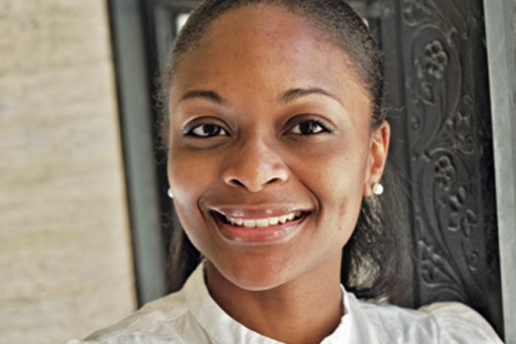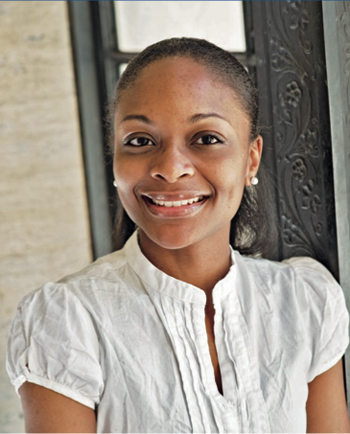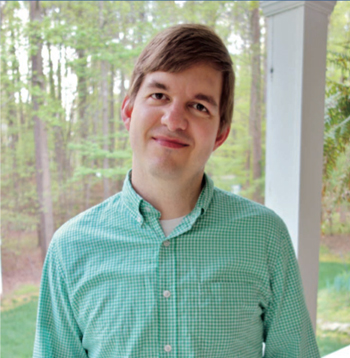
David Danielson PhD ’07
As the assistant secretary for energy efficiency and renewable energy (EERE) at the US Department of Energy (DOE), David Danielson leads the agency’s efforts in high-impact research, development, and demonstration to make clean energy—from biofuel vehicles to geothermal power—cost-competitive. The position builds on his experiences, first as a clean energy venture capitalist and then as the first program director for DOE’s Advanced Research Projects Agency-Energy (ARPA-E), where he led R&D programs that focused on high-risk, high-reward clean energy technologies. While at MIT, Danielson founded the MIT Energy Club.
Why do you consider energy such an important challenge, and how is your DOE office taking on that challenge?
The energy challenge has such wide implications. By transitioning to cleaner energy sources, we can confront many of our greatest national challenges: increasing national security by decreasing our dependence on foreign oil, confronting climate change, and reinvigorating our economy through innovation and advanced manufacturing. EERE is at the center of all of this and is committed to getting things like solar power and cellulosic ethanol to be commercially viable and widely adopted. What’s exciting is that by tapping into America’s best innovators and entrepreneurs, we’re now at a point where in the next five to ten years many clean energy technologies are going to be directly cost-competitive with incumbent technologies.
How did your venture capital background change your outlook?
In my venture capital experience I came to understand that an entrepreneurial spirit, a celebration of taking calculated business risks, and a willingness to fail and get back up again are intrinsic to our American identity and to our competitive advantage. There are other countries where if you started a business and that business went under, you would be considered a failure. Cultures that don’t celebrate risk-taking and tolerate failure don’t tend to be as innovative as our society. Applied to the clean energy race, this spirit—combined with partnerships with innovators like we have at MIT and continued government support for EERE—can result in American leadership in this multitrillion-dollar market opportunity.
What lessons did you learn from MIT that you would like to pass on to students who are just starting out?
When I first got to MIT, I was definitely a techie’s techie. I thought that it was the technical people who knew everything and should be making all the decisions. What I learned is that you need all types of people to come to the table to do good problem solving—people who understand technology and science, and people who understand public policy and business. That’s something I learned from my colleagues in the MIT Energy Club. So I’d recommend that students get out of the lab and get to know other people with other expertise and try to learn from them. Sometimes this requires you to get out of your comfort zone if you want to grow as a professional and make an impact.

Rhonda Jordan PhD ’12
After getting her master’s degree in electrical engineering from Columbia, Rhonda Jordan decided to take a break from academics to pursue her passion for dance. While dancing professionally in Angola, Jordan witnessed extreme poverty for the first time. The experience pushed her to want to help poor communities. So she decided to study engineering further at MIT, where she joined with classmates to form EGG-Energy, a startup that connects low-income customers in east Africa to electricity. She received her PhD from the MIT Engineering Systems Division (ESD) in 2012. She spent spring 2013 as a consultant at the World Bank researching power system planning and clean energy, and she recently became an energy specialist in the Energy Unit of the World Bank’s Sustainable Energy Department.
What led you to want to not just help the poor but bring them electricity?
When I was dancing in Angola, I saw people who lived in mud huts without running water or electricity. The experience made me realize that in the Western world, we consume exorbitant amounts of electricity, and we don’t even notice it. When I saw how people had to live when they didn’t have it, it really opened my eyes. I wouldn’t be where I am if I didn’t have lights to allow me to study in the evening, or if I had to spend most of my time gathering wood for cooking. So I decided to put my engineering skills to work, went to MIT, and studied power systems in developing countries.
How did EGG-Energy start, and what progress have you made?
After I returned from Africa, I joined with MIT PhD student Blandine Antoine (ESD) and Jamie Yang PhD ’08 (Nuclear Science and Engineering), who wanted to think of a way to improve access to electricity in the developing world. We came up with a plan and won some funding from the MIT IDEAS Competition. We decided to distribute batteries and set up charging stations, some running on hydro and thermal (via the grid) and some running on solar. Now we reach about 4,000 people. One of our customers came to the charging station and brought his kerosene lantern and said, “This is a gift for you. I don’t need this anymore.” Reducing the use of kerosene, and thereby cutting emissions and air pollution, is one great accomplishment.
You’ve had a multifaceted career—from dancing to entrepreneurship. What do you see yourself doing in the future?
My mom always tells me, “You can do all of the things that you want to do. It’s just a matter of timing and sequence.” So I haven’t figured out the sequence yet, but I would like to someday teach. I also want to continue going into the field to help countries with electrification planning—something that MIT, and specifically the Energy Initiative, has helped me do. And I want to open a dance school, because the arts taught me a lot of discipline that was very helpful as I pursued academics.

Jeremy Johnson PhD ’06
In 2003, chemical engineering PhD student Jeremy Johnson was assessing the economic and environmental performance of biomass when his classmate Michael Raab PhD ’06 had an idea. What if they could degrade the cell wall of feedstock with enzymes and produce low-cost sugars for fuel? With Johnson’s background in comparing biofuel technologies and Raab’s background in designing them, the two decided to team up and create Agrivida—a company focused on developing and commercializing this technology. Since then, Agrivida has received funding from major venture capital firms, the National Science Foundation, US Department of Energy (DOE), and US Department of Agriculture. DOE recognized Agrivida with an Energy Innovator Award, and the company received visits from former DOE Secretary Steven Chu and Department of Agriculture Secretary Tom Vilsack.
Why did you decide to co-found a startup?
While I know a lot of people come to MIT with the idea that they want to start their own company, I wouldn’t say I came with that goal in mind. But the entrepreneurial spirit rubbed off on me. When I first got to MIT, one of the students in my research group won the $100K Business Plan Competition. I thought that was the coolest thing that he had won. So the following year, when Mike Raab came to me with his idea and wanted my help writing a business plan for the competition, I jumped at it. We didn’t win, but the idea of continuing to work on it seemed exciting. So I did it.
What did you learn from your experience at MIT that has helped you with Agrivida?
My thesis involved looking at data and quantifying uncertainty to help decision makers gauge which facilities were worth building or which biofuel policies would work best and be the most cost-effective. In running the company, I need to make decisions like which experiments to run or which projects to focus on. In making those decisions, there’s a lot of uncertainty in how the technology will work and how the markets will play out. So I use the same tools and thought processes for managing uncertainty that I used at MIT.
What advice would you give MIT students looking to form their own energy startup?
I would say to take advantage of all the resources that MIT has to offer. The Entrepreneurship Center and Venture Mentoring Service were both helpful in getting us started. But beyond services like those, it’s also important to get involved with clubs like the Energy Club. I tend to be an “everything on board” person, where I value having a good understanding of what’s going on in the solar industry, the natural gas industry, the electric car industry—along with the biofuels industry. It’s important to know the different energy alternatives out there and understand how your expertise or your specific technology option might fit in. That’s where interacting with many different people through the Energy Club can be helpful.
This article appears in the Spring 2013 issue of Energy Futures.